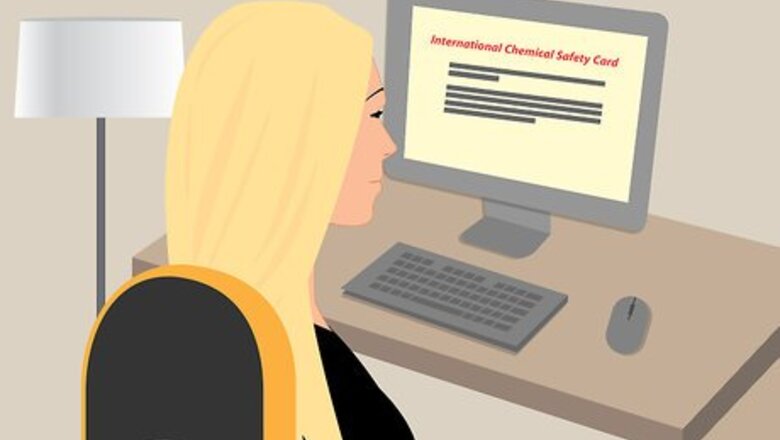
views
Working Safely

Read the International Chemical Safety Card (ICI) for the acid. You should not throw away acids in the garbage or the sewage system as it can have dangerous consequences. The ICI tells you all the important safety information about handling and storage for a chemical. You can search for the exact name of your acid in the database online and obtain all the relevant information.
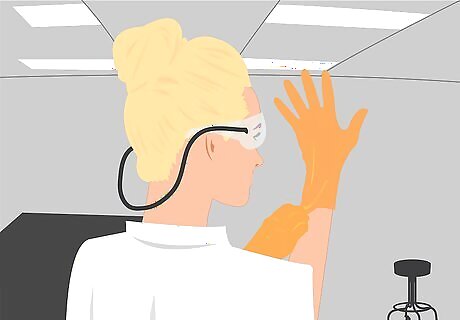
Wear proper protective equipment (PPE). When handling acids or any other strong chemicals, wearing goggles, gloves, and a lab coat is very important. Splash goggles should be used as they protect the sides of the eyes as well. The gloves and lab coat will also protect your skin and clothing. Gloves should be made of plastic or vinyl. Pull back long hair to avoid unintentional contact with the acid.
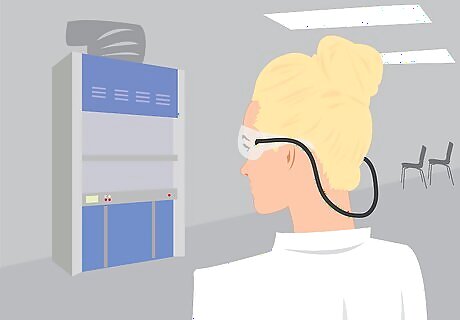
Work in a well-ventilated area or a chemical fume hood. Vapors released by the acid are toxic. Use a fume hood whenever possible to limit exposure. If you don’t have access to a fume hood, open all of your windows and ventilate the area with a fan.
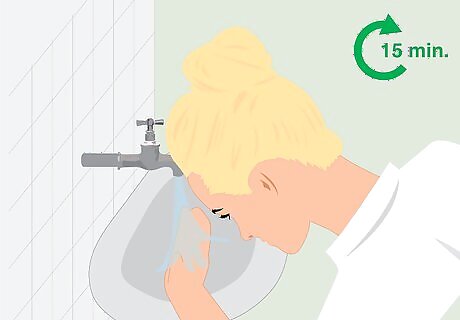
Locate the closest source of running water. In the event that acid gets on your skin or in your eyes, you must flush them with running water for at least 15 minutes. Following this wash, immediately seek medical attention. For eye splashes, keep your eyelids open moving your eyes up, down, and side to side to properly flush them. For skin splashes, immerse the area of skin under running water for the full 15 minutes.
Disposing of Acid at Home
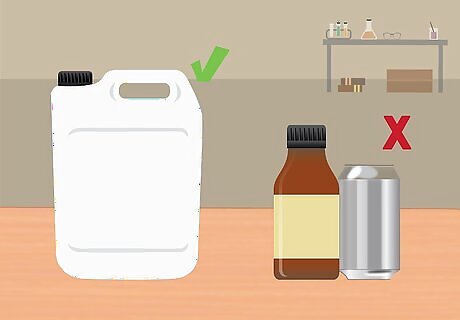
Obtain a container that will not deteriorate when the acid is added to it. Most strong acids will degrade glass and metal, but will not react with plastics. There are many different types of plastics so make sure you obtain the correct container for your acid. The acid should already be stored in such a container, but you will need a second container for diluting and neutralizing the acid. Make sure the container can hold at least twice the volume of solution as the amount of acid you have. This allows you enough space for diluting and neutralizing the acid. Take care not to spill any of the acid if you have to transfer it to a larger container.
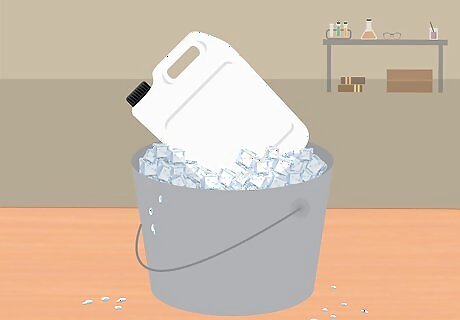
Place the empty container into an ice bucket. When diluting and neutralizing a strongly acidic solution, a large amount of heat is released. To limit the possibility of burns or melting the container, place your empty container into a bucket of ice.
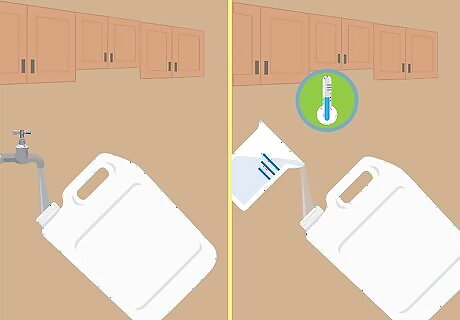
Dilute the acid with water. If you have a highly concentrated acid, you’ll want to dilute it first with water. This step can be dangerous so follow all instructions carefully. Use cold water to prevent the solution from boiling and causing splashes. Add water to the empty container. Slowly, add the acid to the water paying close attention to the temperature of the container as you do. The amount of water needed to dilute the acid is dependent upon how concentrated your solution is. The more concentrated, the more water you will need. You can calculate the exact amount by following the steps in how to dilute an acid. Never add water directly to the acid, this can cause the water to quickly boil and splash the acid. Take care not to spill any of the acid as you dilute it.
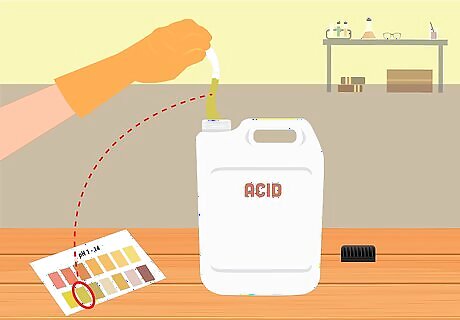
Test the pH of the acid with pH paper or litmus paper. pH strips can be obtained from a science supply catalog or a pool supply store. To determine how much neutralizing solution you’ll need, you must know the pH of the acid you’re trying to neutralize. Dip the end of the pH strip into the solution. The strip will change color based on pH. Remove the strip and compare the color to the pH chart supplied with the strips. The color that matches the strip is the pH of your solution. The lower the pH of the acid, the more neutralizing solution you will need.
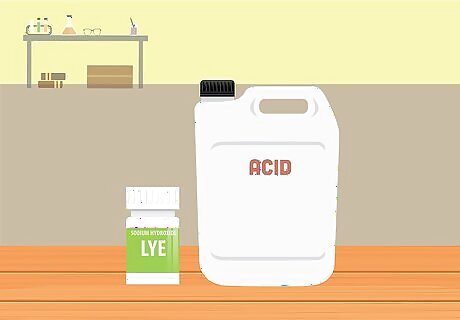
Make a neutralizing solution. Solutions such as sodium hydroxide or magnesium hydroxide are basic and can be added to acids to neutralize them. Sodium hydroxide is also known as lye, while magnesium hydroxide is the main ingredient in milk of magnesia. Both substances can be purchased at the store. Follow the instructions on the container of lye to make your sodium hydroxide solution. Milk of magnesia does not need to be altered and can be used directly to neutralize the acid.
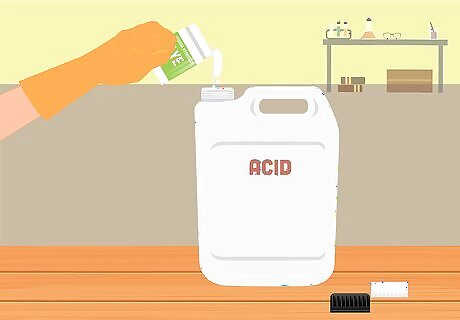
Neutralize the dilute acid. Basic solutions react with acidic solutions to neutralize the acid and produce water and a salt. Slowly add your basic solution a little bit at a time to the diluted acid. Gently stir as you add. Pay attention to the temperature of the container and be careful not to splash any of the solution.
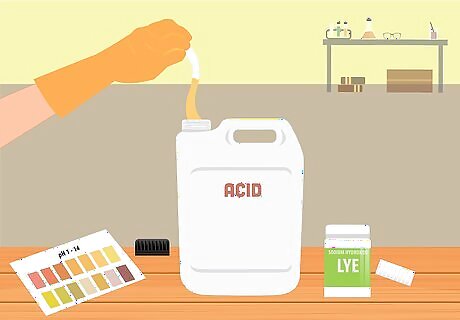
Test the pH frequently. Periodically test the pH with a pH strip to make sure you don’t overshoot the goal pH range of 6.6-7.4. Continue to slowly add the salt solution until you reach the desired neutral range. Alternatively, you can use a universal indicator solution. The liquid will change color according to pH. Add the salt solution until the indicator changes to the color around the range of pH 7.0. If you go beyond the neutral range, slowly add a dilute acidic solution to get the pH back down to at least 7.4.
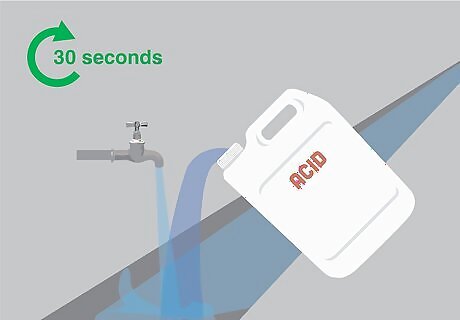
Dispose of the solution down the drain. The neutralized solution can be safely poured down the drain while running cold water. Continue to run water down the drain after the container is empty for at least 30 seconds. Highly toxic acids are hazardous waste. There are separate disposal rules for them in each state. Remember to check them.
Disposing of Acid with Dissolved Heavy Metals
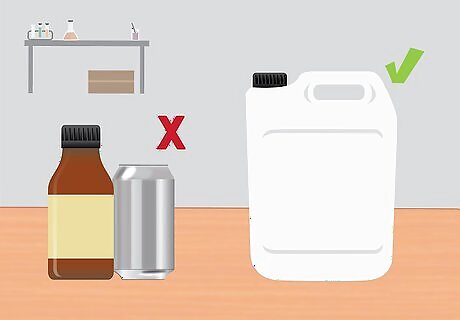
Obtain a container that will not deteriorate when the acid is added to it. Most strong acids will degrade glass and metal, but will not react with plastics. There are many different types of plastics so make sure you obtain the correct container for your acid. The acid should already be stored in such a container, but make sure it is not completely full to prevent spills.
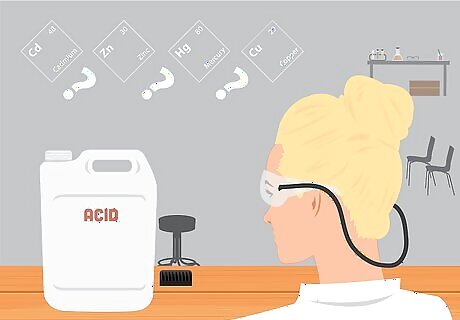
Determine what contaminants are in your acid. Heavy metals such as cadmium, zinc, copper, mercury, and lead are toxic and cannot be added to the water system. Other inorganic compounds that are toxic and/or corrosive also cannot go down the drain. If you have different containers of the same acid with different compounds dissolved in it, keep them in separate containers as they must be disposed of separately.

Contact a hazardous waste pick-up service near you. You should use the EHS Hazardous Waste Program to dispose of most of the chemical wastes. If you are at a university or work in a laboratory, there will be a department that will properly dispose of your hazardous waste for you. If this is not an option you can contact a local organization to help you with the disposal process.




















Comments
0 comment